American Elder Tree
- June 9, 2023
- 0 comment
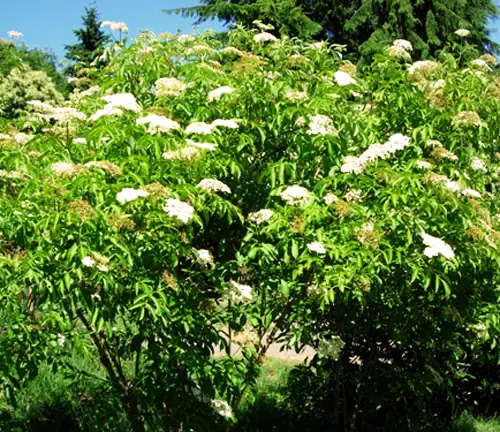
Common Name: American Elder Tree
Botanical Name: Sambucus canadensis
Family: Adoxaceae
Plant Type: Deciduous shrub/tree
The American Elder tree (Sambucus canadensis) is a captivating and versatile plant that holds a prominent place in the ecosystem. This article will explore various aspects of this remarkable tree, shedding light on its characteristics, benefits, care, and more. So, let’s embark on a journey to discover the secrets of the American Elder tree.
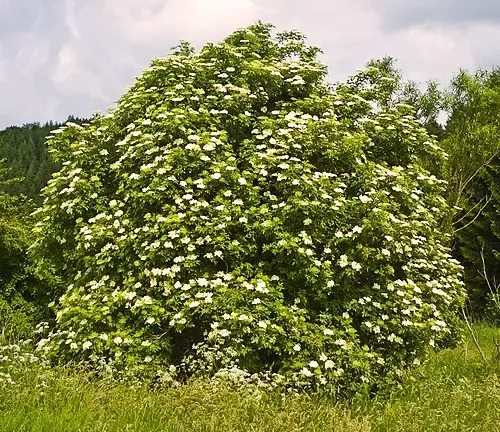
Mature Size
The American Elder tree typically reaches a height of 10 to 12 feet (3 to 3.6 meters) and spreads to about 6 to 8 feet (1.8 to 2.4 meters). However, under optimal conditions, it can grow even taller and wider.
Soil Type
adaptable to various soil types, but it thrives best in moist, well-draining soils.

Hardiness Zones
The American Elder tree is well-suited to hardiness zones 4 to 9, making it suitable for a wide range of climates across the United States.
Growth Rate
It is considered a fast-growing tree, adding about 2 feet (0.6 meters) in height annually.
Sun Preference
While the American Elder tree can tolerate some shade, it prefers full sun to partial shade for optimal growth.
Soil Preference
This tree is not too picky about soil pH and can tolerate a range from acidic to slightly alkaline.
Attributes
The American Elder tree possesses several attractive attributes. Its large, compound leaves have a vibrant green color that creates a lush appearance in the landscape. In early summer, it showcases an abundance of fragrant, cream-colored flowers in large clusters called cymes, which are not only visually appealing but also attract pollinators. In the fall, the tree bears clusters of dark purple to black berries that add a touch of color.

Wildlife Value
The American Elder tree provides an invaluable resource for wildlife. Its flowers attract bees, butterflies, and hummingbirds, while its berries serve as a vital food source for birds, such as robins and cedar waxwings. Additionally, the tree’s dense foliage offers shelter and nesting sites for various bird species.
Care
Taking care of an American Elder tree is relatively easy. It requires regular watering, especially during dry spells, and benefits from a layer of mulch to retain moisture. Pruning should be done during the dormant season to remove dead or damaged branches and encourage healthy growth.
Benefits
The American Elder tree offers numerous benefits. Its flowers can be used to make delicious elderflower cordials and teas, while its berries are commonly utilized for jams, jellies, and pies. Medicinally, elderberries are rich in antioxidants and have been traditionally used to boost the immune system and alleviate cold and flu symptoms.
Invasive
While the American Elder tree is not considered invasive, it can spread through self-seeding. However, this is usually not a concern in natural settings and can easily be managed in cultivated landscapes.
Lifespan
The lifespan of an American Elder tree is typically around 10 to 15 years. However, with proper care and favorable growing conditions, it can live up to 20 years or more.
Disadvantage
One potential disadvantage of the American Elder tree is its susceptibility to certain pests and diseases, which may include aphids, powdery mildew, and cankers. However, these issues can be mitigated through proper care and regular monitoring.
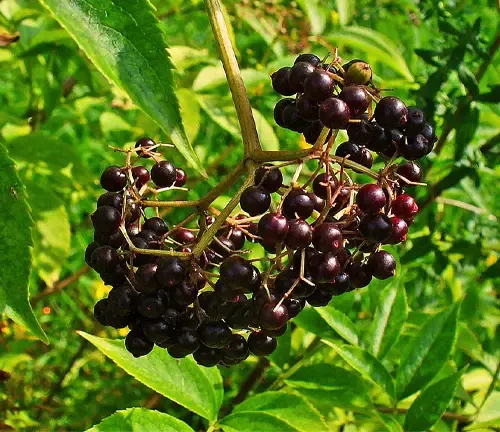
Edible or Not
Yes, both the flowers and berries of the American Elder tree are edible. However, it’s essential to ensure proper identification and preparation before consuming any part of the tree.
Habitat Requirements
The American Elder tree can thrive in a variety of habitats, ranging from moist woodlands and stream banks to open fields and disturbed areas. It is adaptable and can tolerate both wet and dry conditions.
Name Origin
The name “elder” is derived from the Anglo-Saxon word “aeld,” meaning fire, possibly because the hollow stems of the tree were once used to blow air into the flames.
Fun Facts:
- The American Elder tree is closely related to the European Elder tree (Sambucus nigra) and shares many similar characteristics.
- The hollow stems of the American Elder tree have been historically used to make musical instruments, such as flutes and whistles.
- Elderberries have been used for centuries in traditional medicine for their potential health benefits.
Characteristics
The American Elder tree is characterized by its multi-stemmed growth habit, compound leaves consisting of 5 to 11 leaflets, and clusters of small flowers followed by dark berries. The bark is grayish-brown and develops shallow furrows and ridges as the tree matures.
Varieties
Several cultivars of the American Elder tree are available, including ‘Adams,’ which produces larger berries, and ‘York,’ which has a more compact growth habit.

Pruning
Pruning should be done in late winter or early spring to maintain a desirable shape, remove deadwood, and promote airflow within the tree. It is best to consult pruning guidelines specific to the American Elder tree to ensure proper techniques are employed.
Propagating
American Elder trees can be propagated through seeds, hardwood cuttings, or layering. Seeds require stratification (a period of cold treatment) before germination, while cuttings and layering methods allow for the propagation of specific cultivars.

Common Pests & Diseases
Common pests that may affect the American Elder tree include aphids, spider mites, and borers. Diseases such as powdery mildew, leaf spot, and cankers can also be potential issues. Regular monitoring and appropriate measures, such as insecticidal soaps or horticultural oils, can help manage these problems effectively.
Frequently Asked Questions
- Can you eat elderberries raw? While the ripe berries can be eaten raw, they are often cooked or processed into various culinary delights due to their somewhat bitter taste.
- Are elderberries poisonous? The ripe berries of the American Elder tree are generally safe to consume in moderation. However, it is essential to avoid eating unripe berries and other parts of the tree, such as leaves or bark, which may contain toxic compounds.
- How do I attract pollinators to my American Elder tree? By planting flowers that bloom around the same time as the elder tree’s flowers, you can attract a wide range of pollinators to your garden.
In conclusion, the American Elder tree is an exceptional addition to any landscape, providing beauty, wildlife value, and a plethora of practical uses. Its adaptability, ease of care, and delicious edible offerings make it a favorite among gardeners and nature enthusiasts alike. Whether you’re seeking a stunning ornamental plant or a fruitful addition to your culinary adventures, the American Elder tree is sure to captivate and delight.

John Carlos
Forestry AuthorThe beauty of logging isn't just about felling trees. It's about understanding nature, mastering the art of chainsaws, and respecting the environment. I believe in sharing my experiences and knowledge, ensuring that we move towards a sustainable future together.


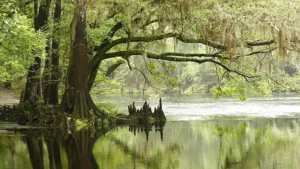
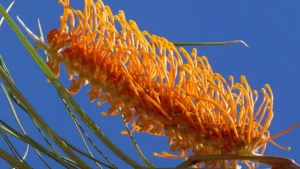


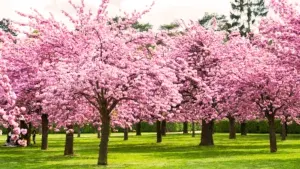
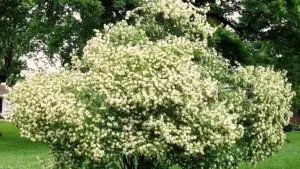
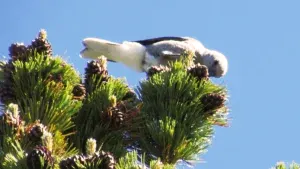
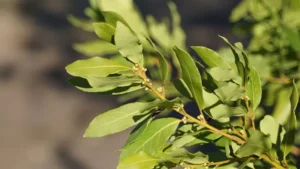

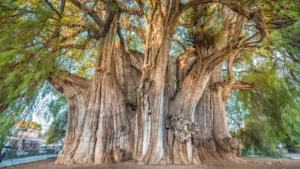

Leave your comment